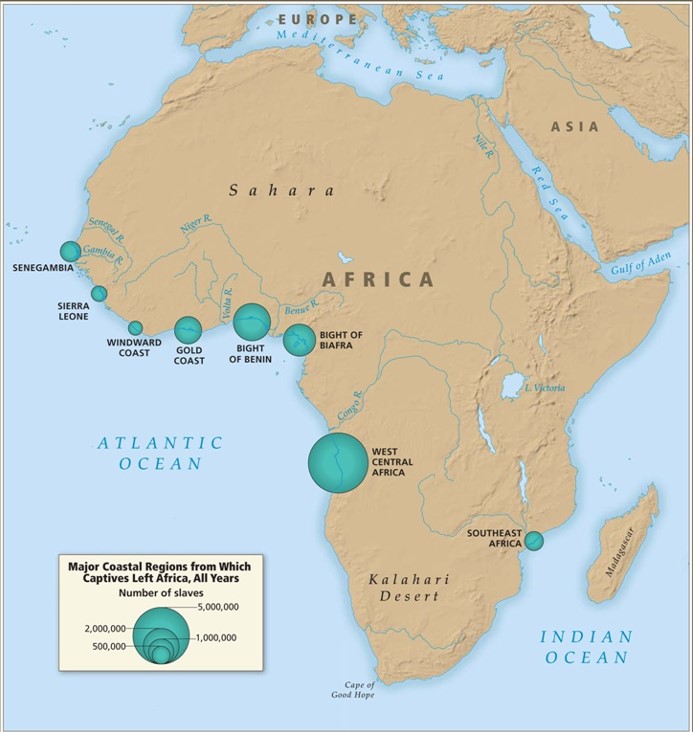Africa
“These boarder countries form the Bight of Biafra and shared embarkment ports for the transportation of our valuable ancestors that endured the Middle Passage and disembarked on the coast of Virgina. Their common and courageous journey set the stage for several groups of families that would change the face of America and challenge the foundational principals set by its hypocritical constitution. These are the stories of life before America.”
The Aro Confederacy was a regional economic power mainly in southern Nigeria were directly instrumental in human trafficking Africans to the Europeans. The business of human trafficking in the bight of Biafra consisted of 4 parties:
- the purchaser from Europe and The Americas (not to say that they were the only regions in the market for Africans),
- the seller the Aro (the main trading structure but not the only one), as has been well documented by Professor G. Ugo Nwokeji[1] of UC Berkeley and African Studies Scholar, were a highly organized multilingual group that used the business of slave trade for pecuniary so that they could also expand their empire.
- The suppliers, there were many ways that human capital was supplied for trade, including but not limited to Tribal Chiefs, kidnappers, militia warriors, and politicians who had the power to choose who to keep and who to sell either in large groups or sometimes in small quantities. And finally,
- the most valuable commodity, the individual people, our ancestors made it through the middle passage.
The ancestors were born during a time when Europe had an insatiable appetite for sugar and chattel enslavement. The bight of Biafra had many resources including yams, palm oil, kolanut, and intelligent and physically fit people in abundance. While Europeans had the appetite, fellow African brothers participated as sellers and suppliers in trafficking to gain wealth and power.
The word slave from an Anglo-American perspective means a person who has no rights and therefore counted as chattel. On the contrary from an African perspective, this concept of enslavement was seen more as indentured servitude. The European and the American appetite for chattel slavery was quite distinct and veracious. Consequently, millions were captured and trafficked to the western hemisphere. The majority landing in South America, the Caribbean, Central America, and finally the smallest group landed on the east coast of what would become the United States of America.
Slavery was integral to the African Aro’s political economy which resided in the bight of Biafra. They created, developed, and expanded a successful trading network in the Biafra Atlantic. They traded with the Europeans, American Colonizers, and the tribal groups in the area. Aro expansion correlates closely with the rise of the Biafra Atlantic slave trade.[2]
How did the Aro’s decide who was sold and who got to stay in Africa? There were various methods that accelerated one’s departure from the motherland. Some of these ways included wars, kidnapping, economic necessity trades, undesirables/criminal, political deportees, captives resold, and deportations as form of punishment, just to name a few. For many Africans, it was thought that the colonists would kill and eat the captives. They believed that when they died, they would return home or be allowed to travel to whatever country they chose. So consequently, some Africans chose suicide versus veracious cannibalism. While others perished from the inhuman conditions of their captivity on enslaver ships. Still, the strong survived.
[1] G. Ugo Nwokeji, The Slave Trade and Culture in the Bight of Biafra
[2] Ibid.

